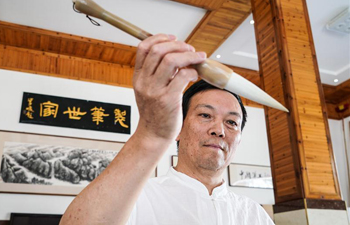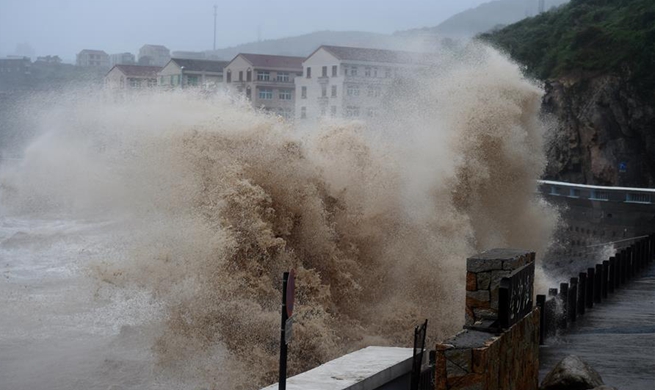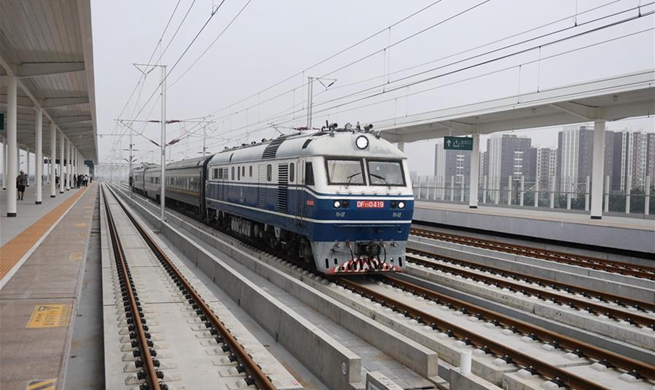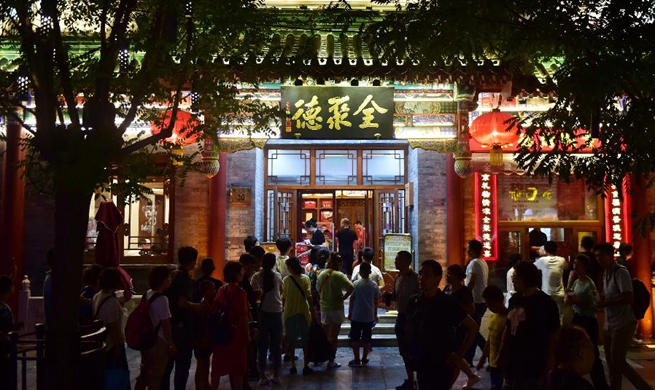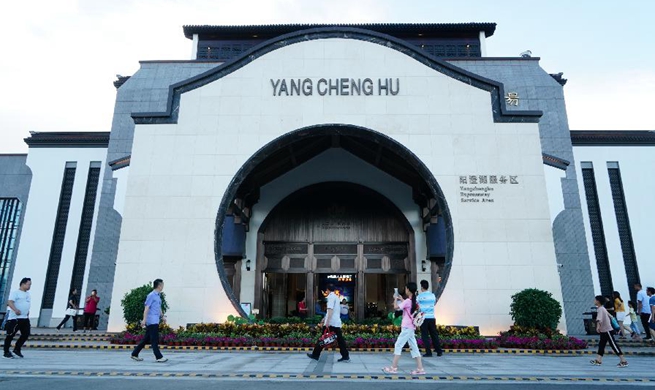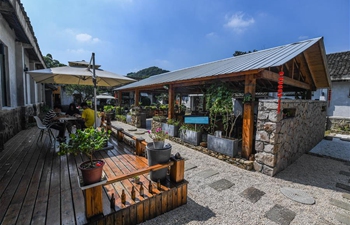NAIROBI, Aug. 9 (Xinhua) -- At Hill View Estate in Kitengela, south of Nairobi, Kenya's capital, three solar lamps erected along the main passageway stand out, especially at night.
The solar lamps installed recently are the main source of security lighting at night in the estate. Residents went for the solar lights imported from China to save costs after finding electricity installation expensive.
To install electricity-powered lights, it would have cost them some 80,000 Kenyan shillings (798 U.S. dollars), with nearly half of the money going to government-owned company Kenya Power as standard charges and the rest on lights and lampposts.
The three solar lights, however, cost them 98 dollars each, inclusive of the panels, and three fabricated lampposts went for 33 dollars each.
"We did the costing and realized solar was the best option for the lights. It was not only cheaper in the short term but also in the long term because the lights have no monthly bills," Dan Musyoka, an official of the estate, said Friday.
Estates, individual homes, airports, hotels, schools and hospitals are among entities that are embracing solar energy for lighting and water heating to cut costs as the price of electricity rises in the east African nation.
The cost of electricity in Kenya has increased significantly, pushed up by a lengthy dry spell that has hit production from hydro sources.
The lengthy dry spell, blamed on climate change, has seen Kenya push up power production from expensive thermal sources.
Kenya gets its electricity from wind, 145 million kilowatts per hour (KWh) a month, geothermal of over 400 million KWh, thermal of 100 million KWh, solar of 8 million KWh and hydro of 280 million KWh, according to the Kenya National Bureau of Statistics (KNBS).
Production from hydro has declined from an average of 400 million KWh a month while thermal has risen to over 100 million KWh a month from about 50 million KWh a month.
A Kenyan household that consumed 50 KWh paid 8.4 dollars in July, up from 6 dollars in July 2018, according KNBS.
On the other hand, households that consumed 200 KWh paid 47 dollars in July, up from 41 dollars in July 2018, shows KNBS data.
The high electricity charges are among the biggest contributors of rising inflation in Kenya, which stood at 6.27 percent in July, up from 5.7 percent in June.
While initially it cost up to 298 dollars to buy a 50 watts solar light, an increase in Chinese imports has brought the costs down, with each going for 98 dollars in retail shops, enhancing accessibility.
On the other hand, a 40-watt light is going for an average of 78 dollars. These prices have boosted uptake of solar lights immensely as electricity costs rise.
"It is two years since I installed two made-in-China solar lights at my parents' rural home in Busia, western Kenya, and they are still working well," said Gilbert Wandera, who sells computers in Nairobi.
The businessman went for the lights because of low installation costs and the need to avoid monthly bills.
"I used to pay for my father 25 dollars in power bills every month and this was because of the security lights. Since I embraced solar, I now pay 15 dollars maximum," he said.
Experts noted that going for solar lighting is climate-smart as the country is receiving more sunshine thanks to the dry spell.
"Using solar lights is a way of adapting to the changing climate. The weather has given us more sunshine, then why not take advantage of it?" Ernest Manuyo, a business lecturer at Pioneer Institute in Nairobi, said.
